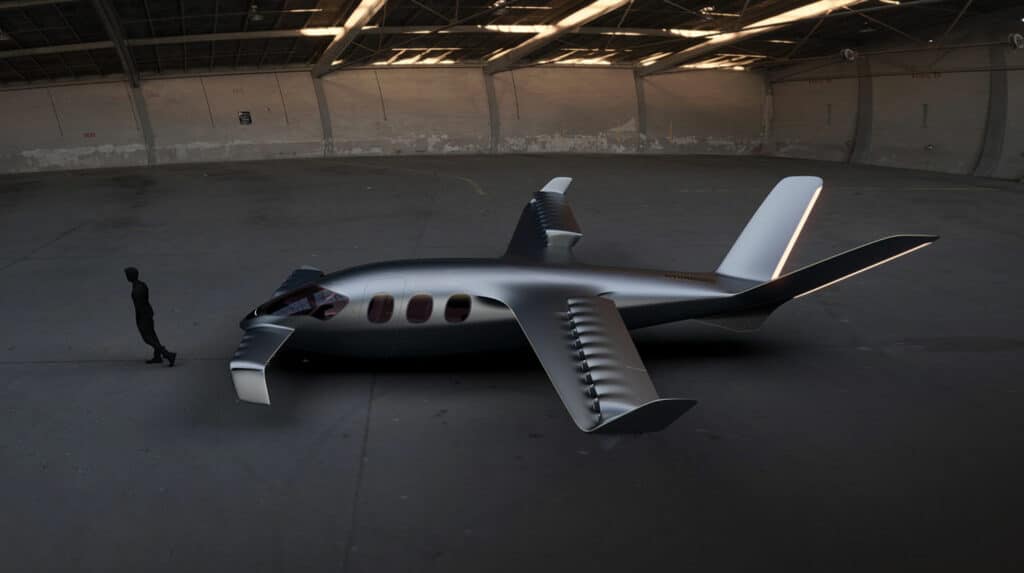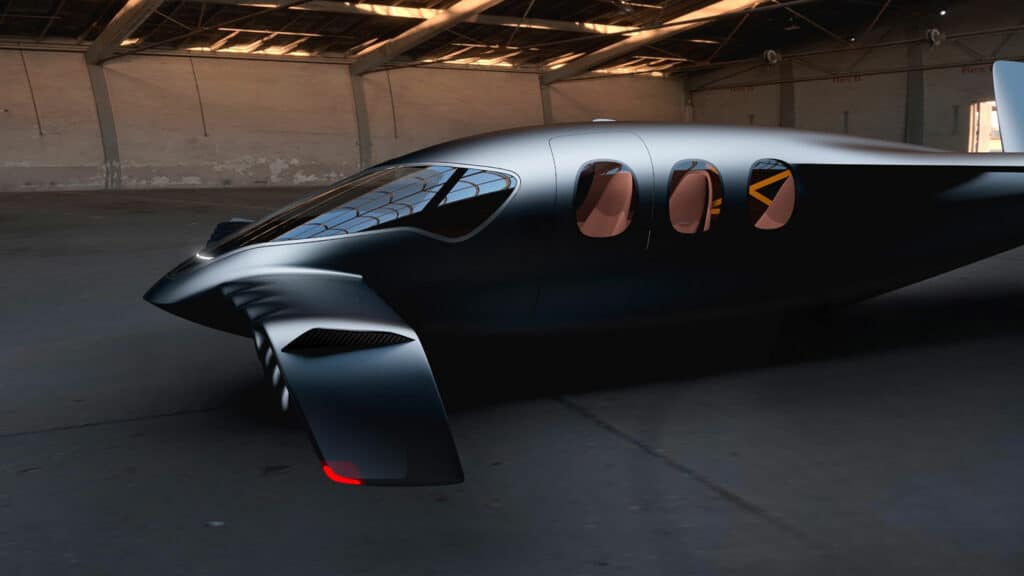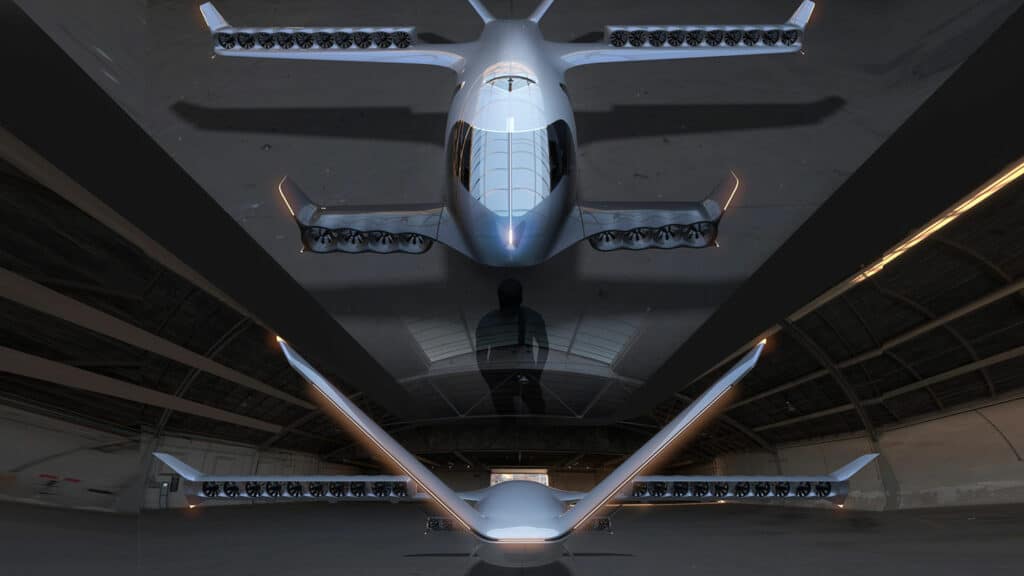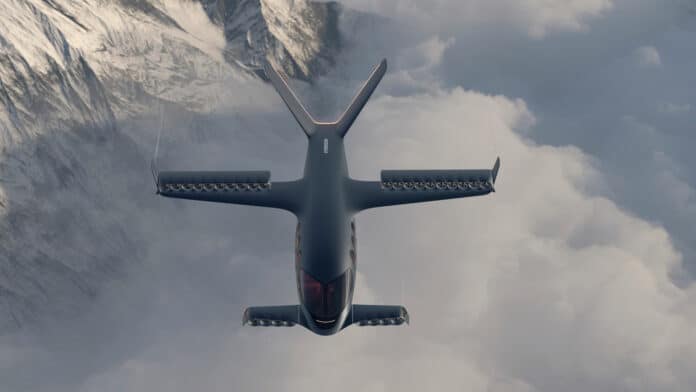Swiss aviation startup Sirius Aviation AG has unveiled the revolutionary Sirius Jet – the world’s first hydrogen-powered Vertical Take-Off and Landing (VTOL) aircraft. The aircraft has been designed in collaboration with BMW’s Designworks and Sauber Group.
The Sirius Jet is a high-performance, zero-emission VTOL aircraft propelled by a hydrogen-electric propulsion system. Leveraging jet aerodynamics with airplane and helicopter versatility, it achieves extended flight distances, impressive speeds, and high altitudes at near-silent levels. This is a significant achievement in aviation and demonstrates the company’s commitment to innovation, sustainability, and safety.
Sirius Aviation AG, which has a team comprised of over 100 engineers, has been working hard on intense R&D to develop this project in the beautiful lakeside town of Baar since 2021. According to their claims, they have already started the certification process with the FAA and scheduled the first demonstration plane flights in 2025. They plan to achieve full certification, commercial deliveries, and shuttle flights by 2028.

The project is essentially a smaller version of Germany’s Lilium Jet, but it runs on hydrogen for higher-density energy storage and a much longer range. The propulsion system is also different, as it uses deflected thrust from its banks of fans instead of just tilting the propulsion units the way Lilium does.
The Sirius Jet comes in two variants – the Sirius Business Jet and the Sirius Millennium Jet. The Sirius Business Jet is a zero-emission, hydrogen-powered VTOL aircraft that can accommodate up to three passengers and has a flight range of 1,150 miles (1,850 km). Featuring a pressurized cabin and ducted fan design solutions, the SiriusJet is engineered to reach high altitudes of 30,000 feet and achieve a cruise speed of 600 km/h (323 mph), producing ultra-quiet noise levels of 60dBa.

Meanwhile, the Sirius Millenium Jet is a zero-emission, hydrogen-powered VTOL commercial aircraft that can accommodate up to five passengers. This version displaces two seats’ worth of hydrogen tanks, reducing the flight range to 650 miles (1,046 km). It has the same cruise speed of 323 mph (520 km/h) and an altitude capability of 30,000 feet. The sound footprint of this aircraft is also at 60dBa.
Sirius is planning to have 20 fans, each just 11.8 inches (30 cm) in diameter, along its wings and 8 mounted in the canard. A separate electric motor will drive each ducted fan.
Featuring a near-silent operation, the aircraft produces about 95% less noise compared to a helicopter, allowing it to operate close to communities with a minimal noise impact. Also, in the event of a critical emergency, the Sirius Jet’s Emergency Parachute System is programmed to deploy automatically, providing an additional layer of safety assurance.

While hydrogen is a promising path toward achieving clean short-range and regional aviation, many challenges remain to overcome before it can be widely adopted. The use of liquid hydrogen, in particular, poses significant logistical and technological hurdles due to the need to keep it at extremely low temperatures throughout the distribution and flight process.
Many companies are actively working on developing aviation-grade powertrains for hydrogen, but there is still a long way to go before they can be certified and put into commercial use. Additionally, the lack of infrastructure for gaseous hydrogen also presents a challenge for the adoption of this technology.
While gaseous hydrogen may be used for short-haul aircraft, Sirius is working on using liquid hydrogen for longer-range flights. However, liquid hydrogen needs to be kept incredibly cold throughout distribution, filling, and flight. Even though gaseous hydrogen aviation is still cutting-edge, liquid hydrogen for aviation is even less mature as a technology. It was only last September that H2Fly made the world’s first piloted flight of a liquid H2-powered plane.
While Lilium is partnering up with battery specialists, Sirius seems to be developing its own liquid H2 powertrain alongside getting an airframe and fully integrated aircraft into production.
Sirius has quite an ambitious program on its hands, with a lot of investment needed to meet its timelines and goals. However, the design looks impressive in the renders, and there’s no doubt that liquid-hydrogen-powered eVTOLs will definitely play a significant role in the future of transportation.
